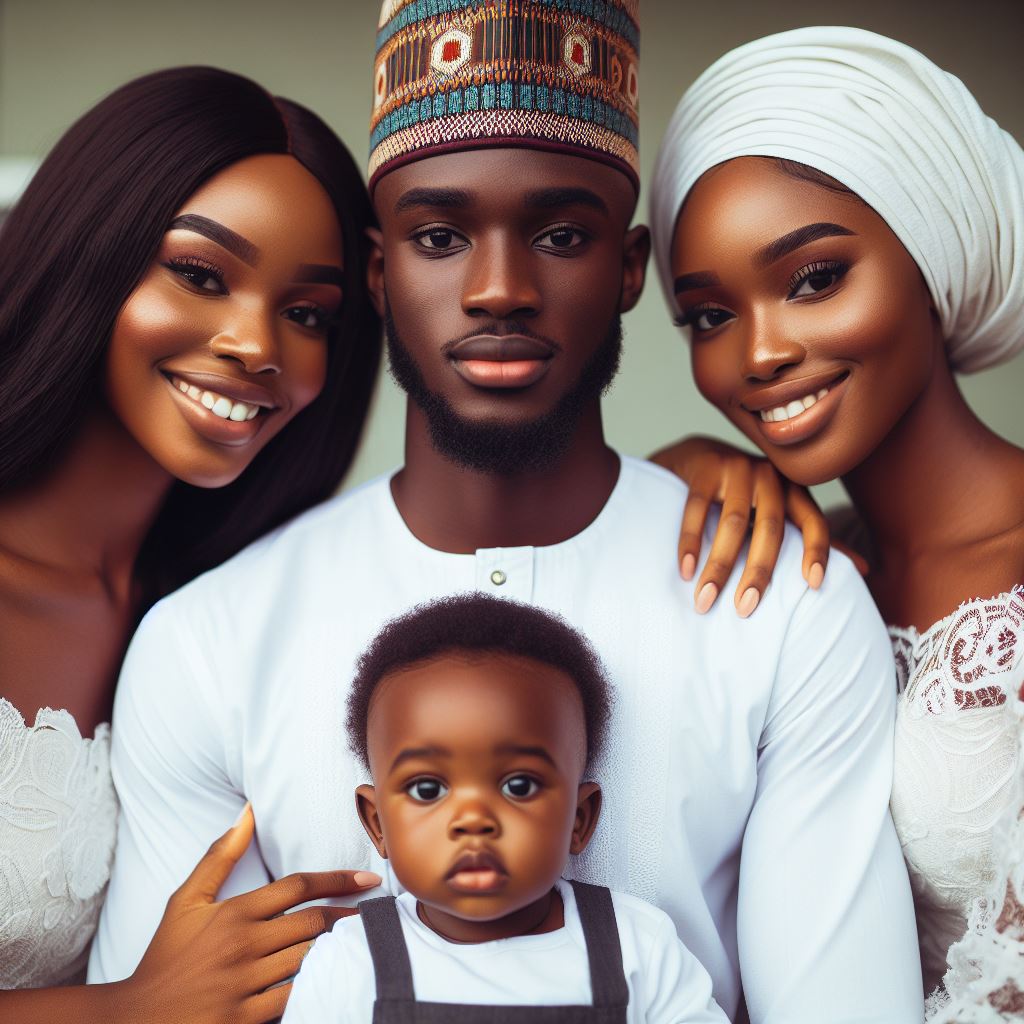Introduction
Dwarfism, a condition causing short stature due to genetic or medical factors, affects bone growth.
Dwarfs are typically under 4’10” and face physical challenges.
In Nigeria, misconceptions surround dwarfism, leading to stigma.
Raising awareness promotes understanding, acceptance, and support.
Nigerian children with dwarfism encounter societal biases and limited opportunities.
Parents and communities lack knowledge about resources for dwarfism support.
Awareness drives inclusive policies and facilitates access to healthcare and education.
Empathy and awareness break stereotypes, fostering an inclusive society in Nigeria.
Definition and Causes of Dwarfism
Dwarfism is a condition characterized by unusually short stature, typically resulting from genetic or medical conditions.
Genetic and non-genetic causes
Genetic causes
- Achondroplasia, the most common form of dwarfism caused by a mutation in the FGFR3 gene.
- Hypochondroplasia, a milder form of achondroplasia with similar genetic causes.
- Diastrophic dysplasia, caused by a mutation in the SLC26A2 gene.
- Spondyloepiphyseal dysplasia congenita, caused by mutations in the COL2A1 gene.
Non-genetic causes
- Nutritional deficiencies during pregnancy or early childhood.
- Hormonal imbalances, such as growth hormone deficiency.
- Severe chronic illness, like kidney or liver disease.
- Infections affecting bone growth, such as meningitis.
Common types of Dwarfism in children
Achondroplasia
- Most prevalent form of genetic dwarfism.
- Causes disproportionate short limbs, large head with a prominent forehead, and shortened fingers.
Hypochondroplasia
- Similar to achondroplasia but with milder symptoms.
- Often diagnosed later in childhood due to less pronounced features.
Diastrophic dysplasia
- Affects cartilage and bone development.
- Causes joint contractures, cleft palate, and clubfoot.
Spondyloepiphyseal dysplasia congenita
- Affects spinal bones and the ends of long bones.
- Leads to short stature, spinal abnormalities, and joint problems.
Pseudoachondroplasia
- Results in disproportionate short stature with specific joint and bone abnormalities.
- Causes joint pain and early-onset osteoarthritis.
Mucopolysaccharidoses
- A group of metabolic disorders causing abnormal accumulation of glycosaminoglycans.
- Can lead to dwarfism, organ damage, and developmental delays.
In essense, dwarfism in children can be classified into various types based on their causes and characteristics.
It is crucial to understand that dwarfism is not a disease but a condition that requires proper medical attention and support for affected children and their families.
Read: Regular Health Checks Before Conceiving
Diagnosis of Dwarfism
Diagnosing dwarfism is a crucial step in understanding and managing this condition.
In this section, we will explore the process of diagnosing dwarfism from a Nigerian perspective.
1. Medical professionals involved in diagnosis
When parents suspect their child may have dwarfism, it is essential to seek assistance from medical professionals who specialize in this area.
Parenting Made Just for You
Get personalized Parenting Solutions tailored to your child’s needs. Transform your parenting journey with expert guidance in 1-3 days.
Get StartedThese experts may include pediatricians, endocrinologists, geneticists, and orthopedic surgeons.
Their expertise and experience are crucial in accurately diagnosing and managing dwarfism.
2. Physical evaluations and medical tests
To determine whether a child has dwarfism, medical professionals conduct a series of physical evaluations and medical tests.
These examinations involve measuring the child’s height, weight, and body proportions.
Additionally, X-rays, blood tests, and genetic tests are performed to identify the specific type of dwarfism.
These evaluations help in understanding the physical characteristics and underlying medical conditions associated with the condition.
3. Psychological and social aspects of diagnosis
Diagnosing dwarfism encompasses more than just physical evaluations; it also involves considering the psychological and social aspects.
Medical professionals should approach the diagnosis empathetically and provide emotional support to both the child and their parents.
They should consider the potential impact of dwarfism on the child’s quality of life, self-esteem, and social interactions.
Understanding these aspects ensures a comprehensive approach to managing dwarfism and promoting the child’s overall well-being.
In fact, diagnosing dwarfism requires the expertise of various medical professionals who specialize in this condition.
The process involves thorough physical evaluations, medical tests, and consideration of the psychological and social implications.
By approaching the diagnosis holistically, we can provide the necessary support and care to children with dwarfism in Nigeria.
Challenges Faced by Children with Dwarfism
Living with dwarfism poses several challenges for children, both physical and psychosocial.
Unveil the Perfect Name that Tells Your Family's Story
Let us help you find a name that embodies your family's values, traditions, and dreams. Our personalized consultation weaves cultural insights to create a name that's uniquely yours.
Get StartedPhysical challenges
1. Restricted mobility and accessibility
Children with dwarfism often face difficulties in terms of mobility and accessibility.
Their short stature may limit their ability to move freely and participate in certain activities.
They may struggle with reaching objects or navigating spaces designed for average-sized individuals.
This restriction can affect their independence and overall quality of life.
2. Medical complications and treatments
Dwarfism can result in various medical complications that require ongoing treatments.
These complications may include spinal issues, respiratory problems, joint abnormalities, and hearing or vision impairments.
Regular medical check-ups, therapies, and surgeries may be necessary to manage these conditions and enhance the child’s health.
Such treatments can be physically demanding and emotionally overwhelming for both the child and their parents or caregivers.
Psychosocial challenges
1. Bullying and social isolation
Children with dwarfism are at a higher risk of experiencing bullying and social exclusion.
Their physical differences make them targets of teasing, ridicule, and discriminatory behavior.
Being constantly subjected to such negative experiences can lead to social isolation, as they may struggle to find acceptance and genuine friendships.
The emotional impact of bullying can be damaging and may affect their self-esteem and overall mental well-being.
2. Mental health issues
The psychosocial challenges associated with dwarfism can also contribute to mental health issues.
Children may develop anxiety, depression, or low self-esteem due to societal pressures and the constant need to prove themselves.
They often face discrimination and stereotypes, which can take a toll on their emotional resilience.
It is crucial to provide them with proper psychological support and nurturing environments to mitigate the risk of long-term psychological distress.
In short, children with dwarfism face a range of challenges, both physical and psychosocial.
Addressing these challenges requires a multi-faceted approach that includes providing accessible environments, medical treatments, anti-bullying initiatives, and mental health support.
By ensuring their physical and emotional well-being, we can help these children thrive and lead fulfilling lives.
Read: Genetic Counseling: Why It Matters for Parents
Support and Resources Available in Nigeria
With a growing awareness about Dwarfism in Nigeria, there are various support and resources available to help children and families navigate their journey.
Healthcare professionals specialized in Dwarfism
Healthcare professionals specialized in Dwarfism play a crucial role in diagnosing, treating, and managing the condition.
Dr. Adekunle Johnson is an experienced pediatric endocrinologist who specializes in Dwarfism.
He has helped numerous children by providing personalized treatment plans, including growth hormone therapy and surgical interventions.
Professor Chioma Adibe is a renowned orthopedic surgeon in Nigeria who has extensive knowledge in treating Dwarfism.
She offers surgical options such as limb lengthening procedures and corrective surgeries to improve mobility and functionality for children with Dwarfism.
Dr. Ngozi Ibrahim, a dedicated pediatrician, focuses on providing comprehensive care to children with Dwarfism.
She emphasizes the importance of early intervention and works closely with families to address their specific needs.
Dr. Ahmed Bello, an endocrinologist, specializes in measuring and managing growth hormone deficiency, which is often associated with Dwarfism.
His expertise assists in determining appropriate treatment options, including growth hormone therapy.
Support organizations and advocacy groups
Support organizations and advocacy groups in Nigeria also play a significant role in providing assistance to individuals with Dwarfism.
The Little People of Nigeria (LPN) is a non-profit organization that offers support, education, and empowerment to individuals with Dwarfism.
They organize workshops, conferences, and counseling sessions to address the specific challenges faced by this community.
The Dwarfism Awareness and Support Trust (DAST) is an advocacy group that raises awareness and advocates for the rights of people with Dwarfism.
They collaborate with medical professionals, policymakers, and the public to promote inclusivity and equal opportunities.
The Nigerian Society for Endocrinology and Metabolism (NSEM) is a professional organization that provides resources and support to endocrinologists.
They contribute to research, education, and training to improve the healthcare provided to individuals with endocrine disorders, including Dwarfism.
The Disability Rights Advocacy Network (DRAN) focuses on promoting the rights of individuals with disabilities, including Dwarfism.
They actively engage with the government and other stakeholders to ensure policies cater to the needs of people with Dwarfism.
Educational resources and inclusive schools
Educational resources and inclusive schools are also available in Nigeria to support the education of children with Dwarfism.
The Nigeria Inclusive Education Foundation offers resources and training to promote inclusive education in mainstream schools.
They work with teachers and administrators to create an inclusive environment that caters to the diverse needs of all students, including those with Dwarfism.
The Universal Basic Education Commission (UBEC) is a government agency responsible for ensuring inclusive education for children with special needs.
They develop policies, provide funding, and support the implementation of inclusive education programs across the country.
Special schools for inclusive education are available in Nigeria to cater specifically to the needs of children with disabilities, including Dwarfism.
These schools provide a supportive environment and specialized teaching approaches to ensure all students receive a quality education.
The Special Needs Education Resource Center provides educational resources, materials, and support for children with special needs, including Dwarfism.
They collaborate with parents, teachers, and healthcare professionals to develop individualized educational plans and address any specific challenges.
In general, Nigeria offers various support and resources to enhance the lives of children with Dwarfism.
Healthcare professionals, support organizations, and educational institutions contribute to creating an inclusive and empowering environment for these children.
With continued awareness and collaboration, Nigerian children with Dwarfism can thrive and reach their full potential.
Read: The Role of Hydration in Pre-Pregnancy

Parenting a Child with Dwarfism
Acceptance and Positive Parenting Approach
Acceptance is key. Embrace your child’s uniqueness, fostering an inclusive environment at home.
Encourage open discussions, making room for your child to express feelings without judgment.
Champion positive affirmations, highlighting strengths and abilities, nurturing confidence and resilience.
Nurturing Self-Esteem and Body Image
Celebrate diversity. Instill pride in cultural heritage, empowering your child’s identity.
Encourage exploration of interests, emphasizing talents and passions beyond physical aspects.
Promote body positivity, reinforcing that beauty comes in all shapes and sizes.
Providing Appropriate Medical Care and Treatments
Collaborate with healthcare professionals specializing in dwarfism for comprehensive guidance.
Regular check-ups are crucial. Ensure timely access to tailored medical interventions and therapies.
Educate yourself about available treatments, advocating for your child’s specific needs in healthcare settings.
In Nigeria, parenting a child with dwarfism demands a proactive, supportive approach.
Embracing acceptance, fostering self-esteem, and prioritizing appropriate medical care is paramount.
With dedication and advocacy, Nigerian parents can create nurturing environments that empower their children.
Remember, beyond physical stature, every child deserves love, respect, and opportunities to thrive.
Read: Newborn Screening in Nigeria: What to Expect
Overcoming Stigma and Raising Awareness
Breaking stereotypes surrounding Dwarfism
- Challenging misconceptions about Dwarfism through education and personal stories.
- Highlighting the achievements and abilities of individuals with Dwarfism in various fields.
- Encouraging positive media representation that portrays Dwarfism in a respectful and accurate manner.
Advocacy campaigns and public education
- Collaborating with local organizations and NGOs to conduct awareness campaigns on Dwarfism.
- Organizing workshops and seminars to educate the public about Dwarfism and its challenges.
- Engaging with medical professionals to improve understanding and support for individuals with Dwarfism.
Celebrating diversity and inclusion in Nigerian society
- Promoting acceptance of individual differences, including Dwarfism, in schools, workplaces, and communities.
- Creating inclusive environments where individuals with Dwarfism can fully participate without discrimination.
- Encouraging the inclusion of Dwarfism-related topics in school curricula to foster understanding and empathy.
Empowering individuals with Dwarfism
- Providing support groups and counseling services to address the emotional and psychological challenges faced by individuals with Dwarfism.
- Promoting self-confidence and self-advocacy skills to empower individuals with Dwarfism to overcome societal barriers.
- Collaborating with employers to create equal employment opportunities for individuals with Dwarfism.
Creating accessible infrastructure and services
- Advocating for accessible infrastructure that caters to the specific needs of individuals with Dwarfism.
- Encouraging businesses and public spaces to implement inclusive policies and facilities.
- Ensuring that healthcare facilities are equipped to provide specialized care for individuals with Dwarfism.
Engaging with policymakers and influencers
- Lobbying for the implementation of policies that protect the rights and promote the inclusion of individuals with Dwarfism.
- Partnering with influential individuals, such as celebrities and public figures, to raise awareness and support for the cause.
- Collaborating with government agencies and organizations to advocate for equal opportunities in all aspects of life for individuals with Dwarfism.
Fostering a supportive community
- Creating social platforms and online communities where individuals with Dwarfism can connect and share experiences.
- Organizing events and gatherings that celebrate the achievements and talents of individuals with Dwarfism.
- Providing mentorship and role models to inspire and guide individuals with Dwarfism towards personal growth and success.
In a nutshell, overcoming stigma and raising awareness about Dwarfism in Nigeria requires a multi-faceted approach.
Breaking stereotypes, advocating through campaigns and education, promoting diversity and inclusion, empowering individuals, creating accessible infrastructure, engaging with policymakers and influencers, and fostering a supportive community are all important steps towards creating an inclusive society that values and supports individuals with Dwarfism.
Conclusion
Recap of key points discussed
Throughout this chapter, we have explored the topic of Dwarfism in Nigerian children.
We have discussed the causes, symptoms, and challenges faced by children with Dwarfism.
We have also examined the misconceptions and stereotypes surrounding Dwarfism.
Importance of acceptance and support for children with Dwarfism
It is crucial to emphasize the significance of acceptance and support for children with Dwarfism.
By creating a supportive environment, we can help these children thrive and reach their full potential. Acceptance will foster their self-esteem and overall well-being.
Encouragement to promote inclusivity and empower individuals with Dwarfism in Nigeria
It is essential to encourage inclusivity and empower individuals with Dwarfism in Nigeria.
We must challenge societal norms and prejudices, provide equal opportunities, and promote their active participation in all aspects of life.
Education and awareness campaigns will play a vital role in achieving these goals.
Let us work together to build a society that embraces diversity and supports every child, regardless of their physical appearance.
Only by promoting acceptance and inclusivity can we ensure a brighter future for children with Dwarfism in Nigeria.




